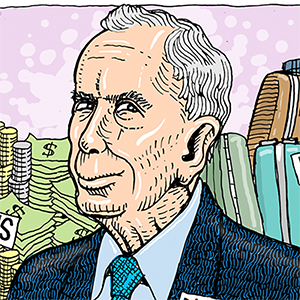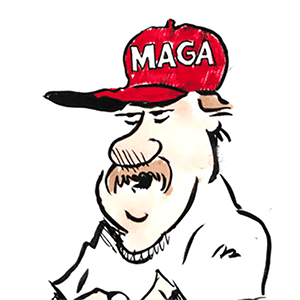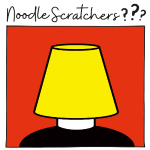Mike Vorel: Seahawks assemble their most intriguing NFL draft class in recent history
Published in Football
RENTON, Wash. — Will this draft help the Seattle Seahawks sidestep the “death zone?”
Those two words were printed on the wall beside where I sat Saturday, among rows of media members in Seattle’s defensive backs room. While fans co-opted the phrase to describe Mike Macdonald’s defense, it’s also a reminder of what the 2024 Seahawks couldn’t overcome.
After earning a 30-18 road win over the Arizona Cardinals on Dec. 8, linebacker Ernest Jones IV said of the Seahawks’ four-game winning streak: “We call it the death zone. We’ve been living in that for the last four games. Each game is a playoff game in our eyes.”
It had to be.
A 4-5 start put the Seahawks in a desperate predicament, needing to win every week to fan a fading playoff flame. Jones’ comment preceded a serving of cold reality, as consecutive home losses to Green Bay and Minnesota effectively ended their postseason push.
Seattle’s flaws proved fatal — the injured and inconsistent offensive line, the lack of offensive balance, the rash of red zone interceptions, the initially ineffective linebacker corps and the leaky run defense.
It’s general manager John Schneider and coach Mike Macdonald’s jobs to ensure the Seahawks don’t need two months of “playoff games” to reach the real thing.
“We’re on our way. We’re growing,” Macdonald said Saturday, when asked to assess his roster. “It’s our job to expedite that process so we’re competing for championships this year, and that’s what we want to do. I’m really confident that we’re going to have that opportunity. That’s the expectation for us.”
Now, for the disclaimer: immediate draft impressions are mostly meaningless. Grades are educated guesses, and not all are educated.
Even so, it’s hard to argue with the Seahawks’ approach.
They needed interior offensive linemen, and they took three of them. With the 18th overall pick, they got Grey Zabel — a 6-foot-6, 316-pound guard (and instant starter) from North Dakota State. They added Kansas’ Bryce Cabeldue and Iowa’s Mason Richman in the sixth and seventh rounds, respectively, investing to improve a decade-long deficiency.
They needed dynamic athletes, and they acted accordingly — with South Carolina safety Nick Emmanwori and Alabama quarterback Jalen Milroe the most explosive examples. At 6-3 and 220 pounds, Emmanwori “had one of the best combines” Schneider has ever seen, running the 40-yard dash in 4.38 seconds and adding a 43-inch vertical leap.
Milroe, meanwhile, is a dual threat dynamo who should be an immediate factor as a runner in short-yardage and red-zone packages. While Milroe was an erratic passer at Alabama, he has time to develop behind Seahawks starter Sam Darnold and backup Drew Lock.
Plus, even if Milroe’s passing traits don’t develop, his athletic ceiling was worth a risk with the 92nd pick.
They needed depth additions at tight end (Miami’s Elijah Arroyo), defensive tackle (Rylie Mills), wide receiver (Colorado State’s Tory Horton and UNLV’s Ricky White III) and running back (Damien Martinez), and they checked those boxes with intriguing talents.
Heck, they needed a fullback for new offensive coordinator Klint Kubiak’s system, and they nabbed a mobile and mustachioed mountain in 6-3, 274-pound punisher Robbie Ouzts.
Athletically, this is the most intriguing class in recent Seahawks history.
“Smart. Tough. Reliable. Swaggy. Athletic. Speed,” Schneider said, listing the common characteristics of his 11 draft picks. “I mean, we added a 275-pound fullback that runs 19 MPH, and that’s pretty cool.”
But don’t confuse promise, traits, talent or cool with surefire production. After he was drafted Thursday, Zabel — a farmer from Pierre, S.D. — said: “Farming and football have a lot in common. You plant a seed in the dirt in the spring and tend to it and try to give it as much as you can to grow a great crop in the fall. Football is the same exact way.”
In the draft, Seattle acquired 11 seeds. The crop will come later, if it ever comes at all.
This class, while encouraging, also comes with question marks. While Zabel projects as a stabilizer inside, the Seahawks could have — should have? — spent another early pick on an offensive lineman. There are also injury concerns, as Arroyo missed much of two seasons with a torn ACL and both Mills and Horton had last season shortened by knee injuries.
Positionally, the Seahawks failed to address their questionable depth at cornerback and nose tackle, and spent just two of 11 picks on defensive prospects.
No class is beyond criticism, but there is a lot to like. The question is whether Schneider and Co. have done enough this offseason to meaningfully improve, to ensure the Seahawks don’t spend the second half of another season scaling the side of a cliff.
They effectively flipped quarterback Geno Smith and wide receiver DK Metcalf for Sam Darnold and Cooper Kupp. They signed defensive end DeMarcus Lawrence and wide receiver Marquez Valdes-Scantling and brought back nose tackle Jarran Reed and aforementioned linebacker Ernest Jones IV. And they still have $34.9 million in available cap space, according to OvertheCap.com.
The “death zone” is a melodramatic moniker assigned to Macdonald’s defense.
It’s also a place the new-look Seahawks may not have to go to again.
____
©2025 The Seattle Times. Visit seattletimes.com. Distributed by Tribune Content Agency, LLC.







Comments